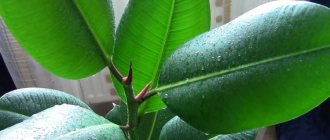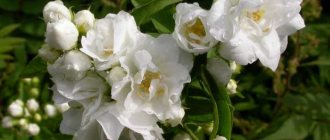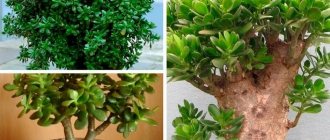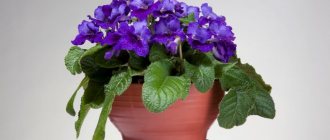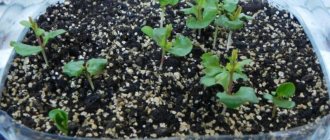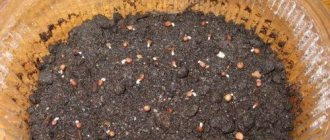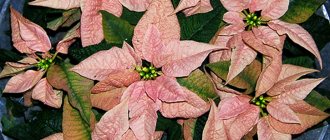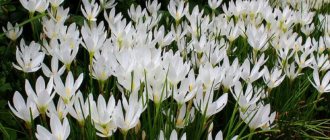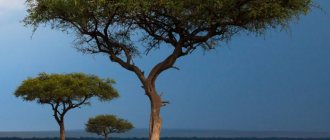Botanical description
The tree caragana species (lat. Caragana arborescens) is part of the legume family (lat. Fabaceae). In cultivation since 1752, the crown of the shrub is formed by stems up to 15 cm in diameter, but by pruning yellow acacia you can get a tree. The bark is light green, smooth, with a grayish tint. The height of the ground part rarely exceeds 4 m, and the diameter of the crown is up to 2.5 m. It grows in one place for up to 50 years.
The leaf is light green (yellow in autumn), alternate, petiolate, of complex shape. On a long petiole (up to 15 cm) there are 5-8 pairs of opposite oval glossy leaves. There are spiny stipules capable of woody growth. Acacia flowers are moth-type, bisexual, with yellow corollas, and have 10 stamens. The buds are formed in bunches of 2-5 pieces in the leaf axils. The flowering season begins at the border of spring and summer. In July-August the fruits, which are cylindrical beans, ripen.
Varieties of caragana tree
On the territory of our country, 17 species of yellow acacia are found in natural conditions. In addition, this shrub also has interesting garden forms. All decorative varieties require pruning and crown formation. In parks and garden plots you can see caragana:
- tree-like pyramidal shape (Pyramidalis), small trees up to 3 meters high with a pyramid-shaped crown;
- with a very compact crown (Cuculata) due to shortened shoots, densely covered with small leaves;
- with a spherical crown (Globosa), shrubs up to 2 meters high with light green pinnate leaves and brown-green smooth trunks and branches;
- dwarf (Nana), a shrubby form, growing no more than 1.5 meters in height, with spaced branches and yellowish bark;
- large-flowered (Grandiflora), the flowers of which reach a size of 3 cm, the height of the bush does not exceed a meter;
- with an unusual golden color of leaves (Albescens), having a standard shape.
Spreading
The shrub can be found everywhere in the forests of Siberia, including in the Altai and Sayan Mountains; in addition, yellow acacia grows in the central and eastern regions of Kazakhstan, in the south of the Urals. It is not uncommon in the Caucasus mountains. Most often, seeds germinate in sparse undergrowth, on forest edges, and on small slopes. In the city limits you can see the plant as part of parklands.
Lankaran acacia
This is another type of acacia, which is very different from the previous ones. It has very beautiful pink unusual inflorescences in the form of panicles, which make up long threads of stamens. Another name for the plant is Crimean mimosa, as well as silk Albizia. The shrub looks tropical, unusual and is very often used for decorative purposes.
This shrub grows in Asian countries, as well as in the countries of the Indian subcontinent. The culture was brought from Constantinople to Europe by the Italian Filippo Del Albizzi. There is another opinion that the homeland of this plant is Azerbaijan. A beautiful and spectacular crop, it is very undemanding to the soil and grows in deserts, on rocky slopes and even in hot climates. Thus, the plant is not at all demanding of soil, but still prefers weather close to a tropical climate. Lush pink inflorescences become an undoubted bright decoration in various cultural and recreation parks in any territory: in Crimea, Armenia, Georgia and Ukraine. This plant is used to landscape all the necessary areas, and even create entire alleys.
Plant characteristics
The tree blooms very beautifully almost all summer and ends flowering in mid-autumn. This plant has two types. This is a tree, the plant in this case reaches a height of 15 m, and also has a very beautiful umbrella-shaped crown, which is about 7 meters in diameter.
To grow this plant, you should choose a fairly large area.
There are also other crops in the form of shrubs. These shrubs are hybrids, having a more compact size, so they are actively planted indoors, in green gardens, greenhouses and even at home. But here you need to take into account that plant pollen is a strong allergen.
The leaves of this crop are divided into many, many lobes, so the plant looks very delicate. The color of the leaves is rich green; the reverse side of the leaf has a white tint. At night or when there is severe drought, the leaves curl and droop. Starting from late spring and ending in autumn, the tree blooms very actively.
These are very beautiful pink lush panicles, also having other shades. In addition to being decorative, the flowers exude a very pleasant aroma, which is why the plant has received such popular love.
Like all acacias, this plant is characterized by fruits in the form of pods, which contain 9 peas inside.
Lankaran acacia is not a frost-resistant plant, since its roots lie very close to the surface of the Earth. Therefore, even slightly sub-zero temperatures can negatively affect the root system. In a suitable climate, the plant grows for up to 100 years. If conditions are unfavorable, the lifespan is reduced by about 3 times.
Rules for planting and care
You need to choose the right place to plant. It will be a sunny, open place. The plant should not be grown in the shade. The optimal time for planting is spring. The soil should be fertile with the addition of lime. The distance between plantings should be approximately 2 meters, and the plants do not like drought and severe waterlogging.
Reproduction
Acacia is propagated by seeds, shoots and cuttings. The most accessible method here is the seed method. It is necessary to first place the seeds in hot water for a while, and then sow them without deepening them too deeply. Some people pre-season the seeds in the refrigerator.
Some species reproduce by shoots, which need to be cut and rooted additionally.
And also, if there are already three or more buds on the shoot, then this will be an excellent material for planting. The cuttings will take root well even without additional soaking.
Feeding
Acacia is very responsive to feeding, which must be started from the second year. Regular watering is required here so that the soil does not dry out. Water for irrigation should be warm. There is no need to water the plants in winter. If acacia grows in a pot, then you should organize a good layer of drainage and occasionally spray the bush. You should also carry out constant sanitary and formative pruning, while removing old, damaged, dry branches. The best period for this is spring or autumn.
Diseases and pests
Acacia has good immunity to diseases and insect pests. However, if the growing conditions are not met, the bush is attacked by spider mites, and if there are drafts, leaf spotting may appear.
Despite this, the plant quickly comes into shape when the causes are eliminated.
Application area
This plant is actively used for medicinal purposes and is even included in the pharmacists’ directory. It contains a large number of minerals, essential oils and various beneficial substances that are used to make drugs against radiculitis, varicose veins, and anti-inflammatory agents. The plant is actively used in cosmetology in the development of various moisturizing creams for wrinkles.
Like any legume plant, acacia saturates the soil with nitrogen, and therefore benefits neighboring plants.
The shrub is thus in great demand due to its decorativeness and unpretentiousness.
Planting and care
Caragana is not demanding on the composition of the soil; it can often be found along roadsides. In the garden, free areas are allotted to it, wanting to create a hedge, strengthen a slope, or cover up an unsightly view.
Hedges are formed using compact planting, leaving a distance of 70-100 cm between seedlings. Over time, the growing crowns of the bushes close together, forming an insurmountable obstacle. The required size of the hedge is achieved by pruning.
You can plant:
- in early spring after the soil has thawed, but the buds on the seedling have not yet awakened;
- in autumn after the completion of the main cycle of vegetation and leaf fall.
Planting holes are dug to a depth of 50 cm, adding peat to the soil to acidify the soil. In the future, caring for the planted plants in the garden consists of regular watering, weeding, sanitary pruning of the crown, and preventive treatments against diseases and pests. Every year in the spring, complex mineral fertilizers and compost are applied to the trunk circles, but nitrogen fertilizers are avoided, since yellow acacia does not require them.
Grass
Leaves, branches and bark, which healers combine with the word “herb,” are used to prepare medicinal products that effectively help with headaches, some liver diseases, atherosclerosis, and heartburn. The bark of the plant is an excellent and time-tested remedy for the treatment of scrofula and catarrh of the upper respiratory tract.
Decoctions of yellow acacia leaves are prescribed for allergies, and the branches on which the buds have not yet opened are used as a powerful bactericidal agent.
Reproduction
The shrub is easy to propagate using seeds, cuttings and grafting. For cuttings, semi-lignified annual shoots are taken, which are treated with a root formation stimulator and planted in loose soil in early summer. Successfully rooted specimens are transplanted to a permanent location with the arrival of autumn.
Before sowing, seeds are soaked until they swell. Sowing is carried out in thawed soil in open ground or for seedlings in greenhouses. Seedlings from greenhouses are transplanted to a permanent place in late spring a year later. Grafting is used to propagate hybrid varieties and obtain weeping forms on the trunk.
Rules for growing white acacia
White acacia, like yellow acacia, is unpretentious and undemanding in care. The plant is very popular in the southern regions, as well as in temperate climates.
This plant is undoubtedly used for decorative purposes, landscaping areas, squares and parks. In addition to beauty, acacia flowers have a pleasant aroma. The culture does not require much effort and time to grow. White locust can grow even in poor weather conditions or in poor soil.
White acacia also belongs to the legume family. However, this is not quite the correct name. In botany, scientists call it False Acacia Robinia.
The tree itself has spreading branches and a trunk that can grow up to 18 m in height. The culture has great growth power, and already a three-year-old plant can reach five meters. The color of the leaves is rich green, and the flowers have a snow-white hue, resembling the shape of white moths. All flowers are collected in clusters and have a pleasant, unobtrusive aroma, which greatly attracts pollinating insects. Thanks to this, white acacia is a honey plant.
If the plant grows in the southern region, then its leaves will be constantly green; if it is a temperate climate, then the foliage will fall off in the winter and turn yellow in the autumn.
Robinia looks very beautiful and impressive, both as a separate plant and in any composition, so it is actively used by landscape designers when designing various territories, for landscaping streets, when creating landscapes, and also for decorating green areas of parks. The width of the crown of the plant reaches approximately 30 cm.
Landing rules
White acacia is propagated by seeds that are pre-germinated or the shoots of an adult plant are also used. Shooting is used much more often than propagation by seeds, because it is not such a long process and the easiest way. The landing site must be chosen in advance. It is better to adhere to the following rules.
The area should be illuminated and sunny. This tree is planted in places where the ecology is very bad, since acacia feels comfortable even in conditions of severe air pollution. Wood is a natural air purifier. It tolerates sub-zero winter temperatures down to 35 degrees below zero, so it is suitable for growing in temperate climates.
Like any plant, white acacia does not like wind and drafts, but it will grow well in loose soil with a small clay content. White acacia does not tolerate waterlogging and stagnation of water.
Care
Care is very simple and comes down to basic procedures. To a large extent, it all depends on the climate where white acacia grows. If it is characterized by the presence of constant winds, then you should choose a place protected from the wind, for example, near a fence or behind the wall of a house.
In order to propagate a plant, they select a healthy shoot growing next to an adult bush, dig it up and transplant it to a new place, after making a small planting hole. After watering, the acacia will begin to actively take root and grow in a short time.
The peculiarities of white acacia include its requirement for clean, not overgrown soil. You need to regularly weed out weeds around the trunk, or it is better to lay out a good layer of mulch.
Reproduction
It is much more difficult to propagate plants by seeds, but this method is still sometimes used. To do this, it is necessary to collect the beans at the end of the growing season and store them in the refrigerator all winter. In the spring, when the snow has melted, you can start sowing.
The seeds must be treated with boiling water and placed in cold water for about 12 hours. After this, the planting material is placed in light sandy soil in a greenhouse, where the ambient temperature will be approximately 23-24 degrees. Seeds sown under such conditions will produce seedlings, which in a year will reach one meter and will be ready for further transplantation to a permanent place. When sowing seeds in groups, it is necessary to maintain a distance of approximately 20 cm between them.
Next, young plants need regular weeding and watering of the soil. To stimulate the growth and rapid development of the plant, it is necessary to feed and apply organic fertilizers. You can also treat plants with special phytostimulants, for example Epin. If your region is characterized by severe winters, then it is better to cover the plants so that they do not freeze in winter. White acacia does not require special watering. The only exception is very dry, hot summers with a long absence of rain.
Diseases and pests
White acacia has a high immunity to various diseases and pests, which can only be envied.
Feeding
The best fertilizer for Robinia is organic matter, such as rotted manure. It must be applied at the very beginning of spring, as well as during the formation of flowers. If the site is unfavorable, the soil is poor, then it is better to apply this fertilizer monthly.
Bush formation
White acacia also needs to be shaped regularly to make the plant look aesthetically pleasing. The culture tolerates this procedure comfortably. Pruning is best done in early spring, and it is necessary to remove old, damaged, dry branches, as well as unnecessary growth.
Thus, white acacia is very accessible for cultivation in many regions and is not demanding either in terms of soil or care. The only thing that needs to be taken into account when growing acacia is to control the absence of stagnant water in the soil, and young plants should also be covered for the winter and additionally insulated. For following simple rules, the tree will thank you with lush, white flowering.
Diseases and pests
The crop is affected by fungal diseases: powdery mildew, rust, white rot. The most effective preventative measures: pruning and burning parts of the bush affected by the disease. Fallen leaves are also burned in the fall. If the crown is affected by rust, it is sprayed with Bordeaux mixture or copper sulfate.
Pests of yellow acacia: false scale insects, acacia aphids, borers, psyllids, glass beetles. In case of a massive invasion of insects, the plantings are sprayed with insecticides.
Collection and storage of raw materials
We have already mentioned that traditional healers use the bark, leaves, roots and flowers of this plant for treatment. Raw materials are collected and prepared throughout the year. Flowers can be collected during the flowering period (in May), and leaves can be collected all summer. However, experienced herbalists are recommended to prepare the raw materials from which medicines will be prepared in the spring. They explain this by the fact that during this period the plant contains a huge amount of useful substances and microelements.
The above-ground part of the plant is laid out in a thin, even layer on cotton cloth or paper in the fresh air, but always under a canopy or in the shade.
The seeds can be easily dried in a not too hot oven, turning them over from time to time. Thin young roots are dried whole, while larger ones should be cut into pieces, and only then put them in the oven.
Meaning and Application
Caragana tree is widely used not only in garden and park landscaping. The medicinal properties of the plant are highly valued. In pharmacology and folk medicine, all parts are used: leaves, bark, flowers. The inflorescences have pronounced anti-inflammatory, expectorant and antipyretic properties.
The real medicine is acacia honey, which contains 40% fructose and 35% glucose. It has a beneficial effect on the entire body as a whole, helps strengthen the immune system, and normalizes blood glucose levels. During the 2 weeks that flowering lasts, the bees manage to collect a huge amount of nectar, which is produced in flowers especially in dry weather.
All parts of caragana are used to obtain infusions and decoctions for headaches and heartburn. The roots and bark are an excellent remedy against flu and respiratory diseases, hay fever, and rheumatism. A substance, cytisine, is isolated from yellow acacia, which excites the central nervous system, increases blood pressure, and stimulates the production of adrenaline. This alkaloid is used in anti-nicotine therapy.
The wood of the plant belongs to the sound species, which are characterized by beautiful textures and unusual fiber patterns. The predominant shade of the wood is yellowish; it has a brownish core and thin sapwood. Wood is characterized by strength, flexibility and hardness. At a humidity level of about 12%, the strength of the material is 600-630 kg/m3, that is, it is actually not inferior to oak. When the wood dries, it does not warp or crack. The main disadvantage is low biostability, so the material is used only indoors. Yellow acacia is easy to process using various methods, including polishing, and varnishing.
Caragana is used mainly for making all kinds of souvenirs and dishes. The strips are used to make hoops for barrels and tubs. Large products (furniture) are not made from yellow acacia, since the stems have a very small diameter, and it is impossible to obtain large-sized parts from them.
Use in landscape design
Caragana bushes are a common plant in hedges. They are planted in single rows, as well as in a checkerboard pattern when it is necessary to obtain a wide barrier strip, for example, around a field. A powerful root system protects the soil from erosion and crumbling, so seedlings can be used to strengthen ravines and slopes.
In ornamental gardening and urban park landscaping, yellow acacia is used to enrich soils. Its root system has the valuable ability to accumulate nitrogen in the ground, which other plants need for nutrition. This is why other plants, especially those that consume large amounts of nitrogen, grow so well next to caragana.
Acacia tree in landscape design
Yellow acacia is a common inhabitant of household plots, as well as city parks. With its help, they create forest shelterbelts, strengthen coastlines, protect the soil from weeds, and sands from forestation.
Gardeners and landscape designers value chiliberry because it enriches poor soils, as it is able to accumulate nitrogen substances. In addition, the caragana tree never suppresses its neighbors in the area.
In single-row hedges, where acacia is most often used, the distance between bushes should be at least fifty centimeters. In double-row hedges, this distance should be increased to seventy centimeters.
Designers often include yellow acacia in spectacular compositions, for example, when landscaping parks and alleys. It also easily forms a beautifully blooming hedge. Moreover, even a beginner in gardening can cope with the task of creating it. To do this, in the fall the bushes must be planted so that they are located at a distance of 30 cm from each other, in a checkerboard pattern. In the spring, all that remains is to do formative pruning.
All articles about caraganas on the site can be read by following this link...
The heady floral aroma of blooming yellow acacia leaves your head spinning every spring. But the advantages of culture are not limited to this. The most useful acacia honey, infusions for treating diseases, decorating the most desolate areas of the garden, beautiful hedges - all this is available to gardeners who do not spare space on their plot for yellow acacia.
Medicinal properties
In folk medicine, all parts of Caragana arborescens are used to treat various diseases.
In alternative medicine, the use of caragana arborescens is used to treat:
- respiratory tract diseases (bronchitis, tonsillitis);
- skin diseases (allergies, diathesis, acne, boils);
- diseases of the digestive system (heartburn, stomach and duodenal ulcers);
- colds (flu, acute respiratory infections, stomatitis, laryngitis);
- joint diseases, arthritis, rheumatism, atherosclerosis;
- liver diseases;
- inflammation of the female organs (cervical erosion, metrorrhagia, leucorrhoea); hemorrhoids;
- diseases of the nervous system (headache, insomnia).
Tinctures and decoctions are prepared as medicinal preparations.
Yellow acacia honey
Beekeeping products - honey collected from yellow acacia, has an amber, light yellow color, a delicate aroma and a delicately sweet taste. A distinctive feature of yellow acacia honey is that it remains in a liquid state for a long time (about two years). It begins to crystallize later than all other types of honey.
Due to the early harvest, this honey is called “May”. Indicated for diseases such as:
- diabetes;
- avitaminosis;
- cataract, glaucoma, conjunctivitis;
- neuralgia, neuropsychological disorders, headache, insomnia;
- diseases of the gastrointestinal tract;
- gallbladder and kidney diseases;
- exhaustion, loss of strength.
Yellow acacia honey can have the following properties on the body:
- antiseptic;
- antimicrobial;
- anti-inflammatory;
- regulates blood sugar;
- sedatives;
- restorative.
Contraindications for the use of medicines based on Caragana
Any medicine, in addition to its beneficial qualities, has a number of side effects and contraindications.
When using infusions and decoctions based on Caragana, it is necessary to strictly observe precautions, not to exceed the permissible dose and time of administration, since during the flowering period the accumulation of a toxic substance - an alkaloid - occurs in all parts of the plant.
If safety measures are abused, consuming large quantities of seeds, decoction or infusion, it can lead to poisoning or even death.
In addition to the medicinal properties, Caragana is contraindicated for children, pregnant women, during breastfeeding, with individual intolerance, and with hypervitaminosis.
